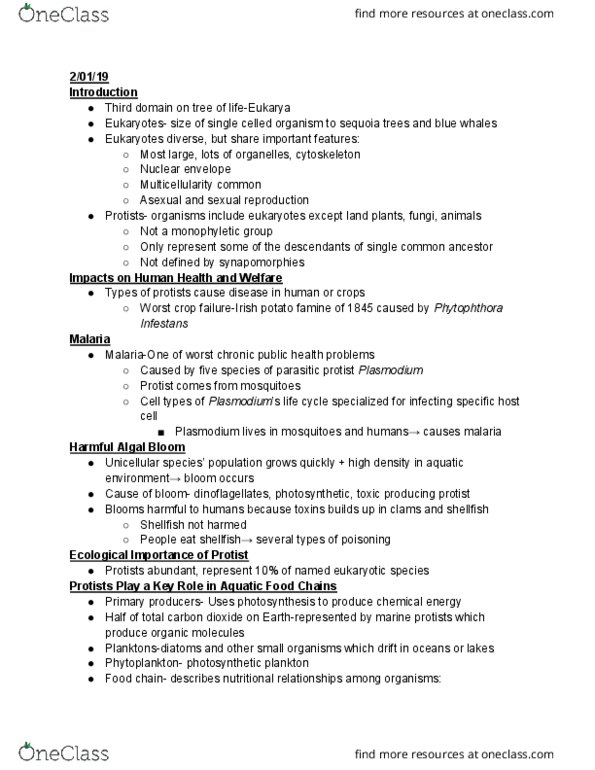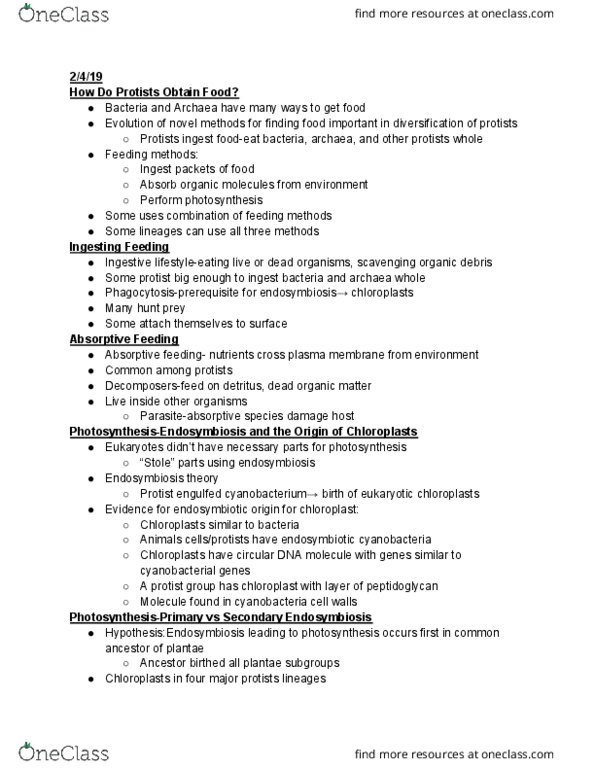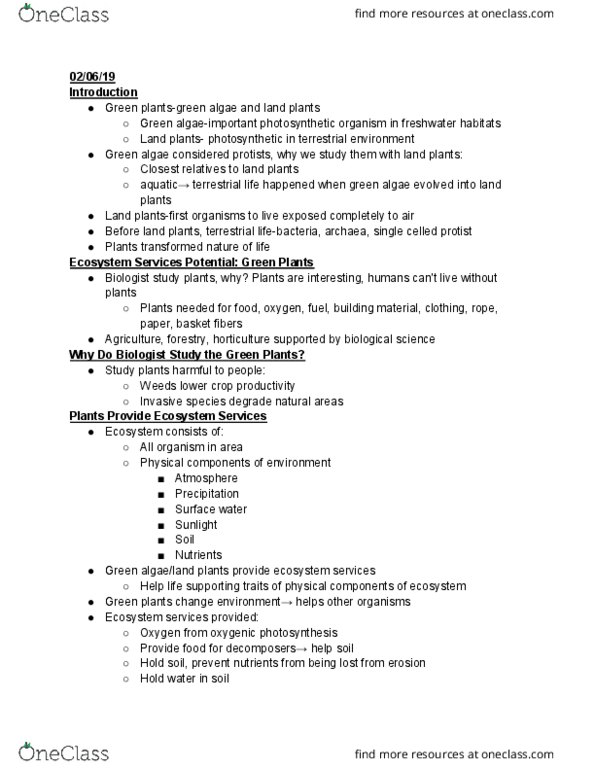BIO SCI 94 Lecture 13: Protist Part 2
BIO SCI 94 verified notes
13/27View all
Document Summary
Bacteria and archaea have many ways to get food. Evolution of novel methods for finding food important in diversification of protists. Protists ingest food-eat bacteria, archaea, and other protists whole. Some lineages can use all three methods. Ingestive lifestyle-eating live or dead organisms, scavenging organic debris. Some protist big enough to ingest bacteria and archaea whole. Absorptive feeding- nutrients cross plasma membrane from environment. Eukaryotes didn"t have necessary parts for photosynthesis. Protist engulfed cyanobacterium birth of eukaryotic chloroplasts. Chloroplasts have circular dna molecule with genes similar to cyanobacterial genes. A protist group has chloroplast with layer of peptidoglycan. Hypothesis:endosymbiosis leading to photosynthesis occurs first in common ancestor of plantae. Protist ancestor may have gotten chloroplasts from secondary endosymbiosis. Primary endosymbiosis rise in photosynthesis within protists. Amoeboid motion-sliding movement in protists by streaming pseudopodia. Human immune system cells use amoeboid motion. Other method uses flagella or cilia to swim. Flagella long, found alone or in pairs.




